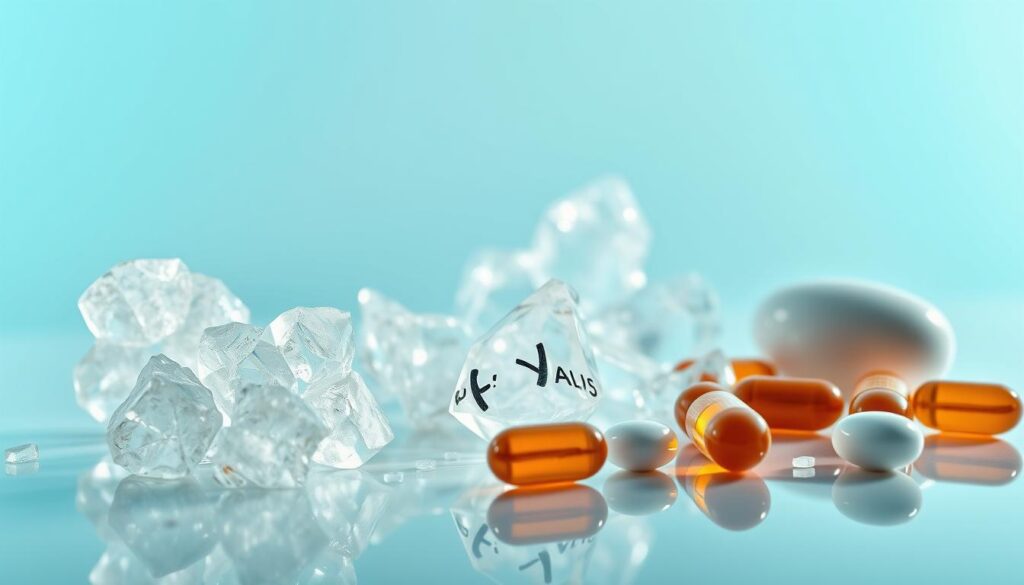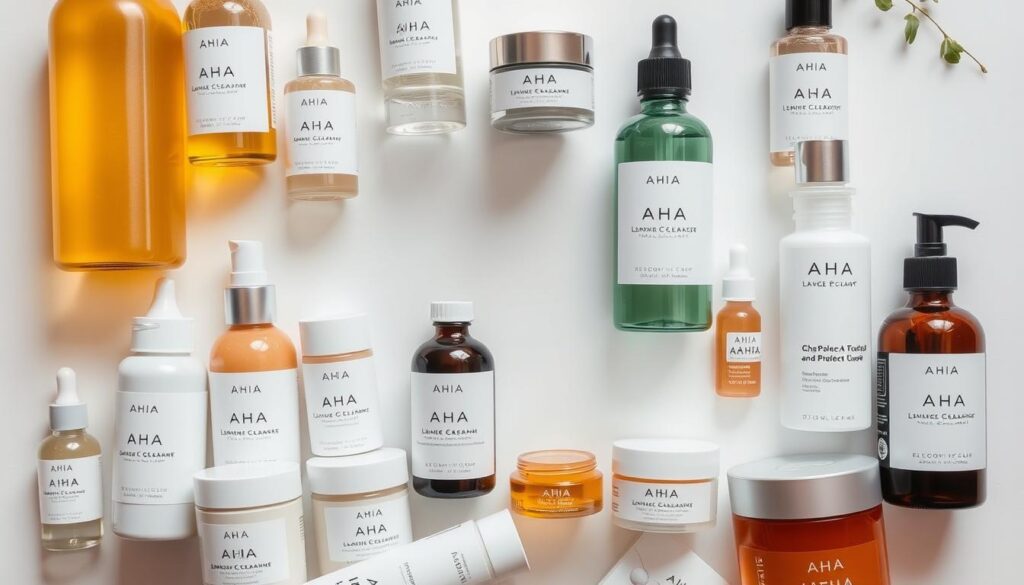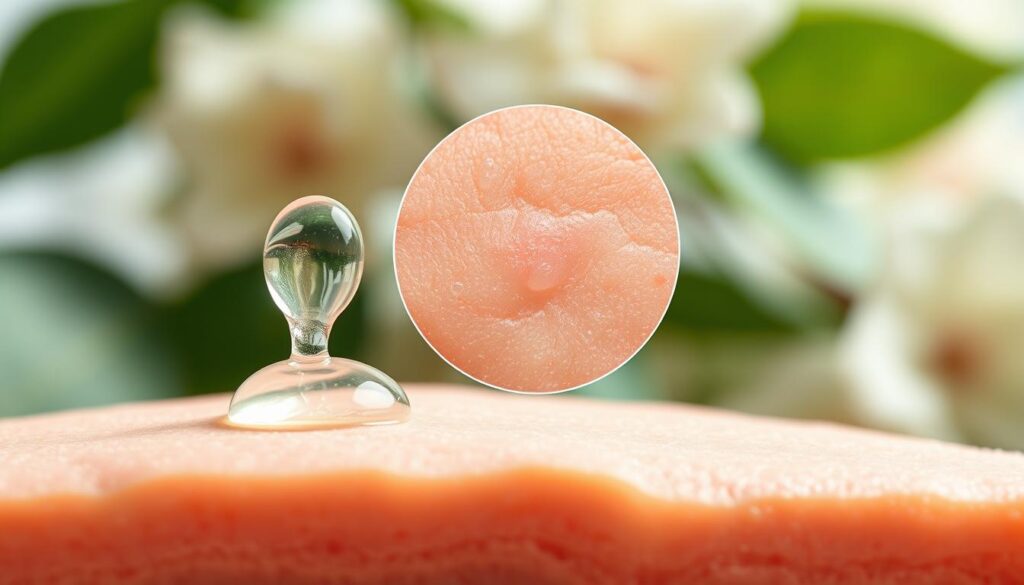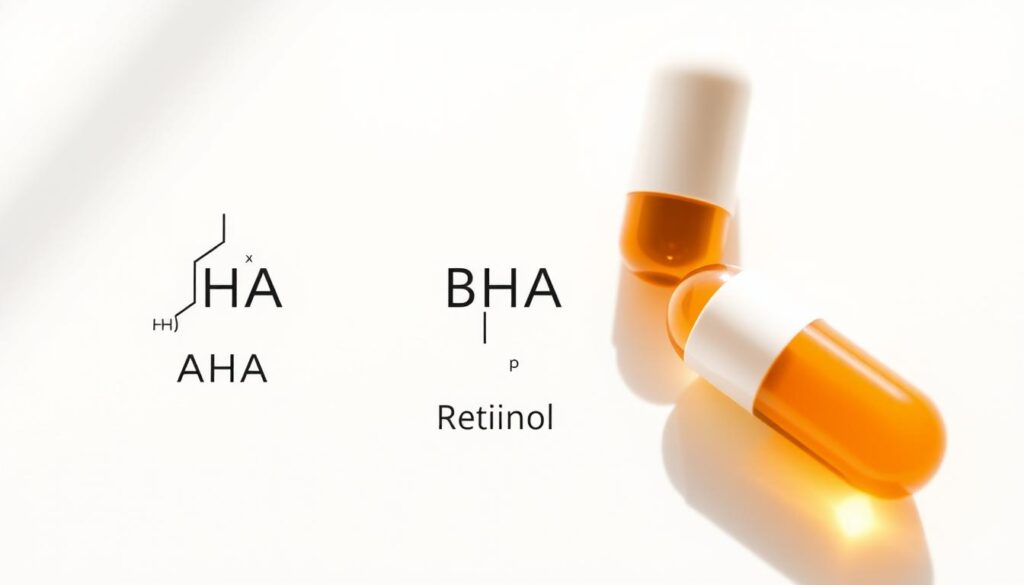Are you getting the most out of your skincare routine? With so many products out there, it’s hard to know which ones to choose. We’re here to help you find the best ingredients for healthy, glowing skin.
Ingredients like AHA, BHA, and Retinol are popular for good reason. They work together to change your skin for the better. We’ll show you how to use them in your routine for the best results.
For more such content VISIT: https://besttopt10.com/
Key Takeaways
- Discover the benefits of AHA, BHA, and Retinol in skincare products.
- Learn how to choose the right products for your skin type.
- Understand how to incorporate these ingredients into your skincare routine.
- Find out how these top skincare ingredients can improve your skin health.
- Get expert tips on maximizing the effectiveness of your skincare products.
What Are Active Ingredients in Skincare?
Skincare products work thanks to their active ingredients. These ingredients tackle issues like aging, acne, or dark spots. They are the real deal, providing solutions for different skin problems.
Definition of Active Ingredients
Active ingredients in skincare change the skin’s look or feel. They’re backed by science and used in enough amounts to work. For example, AHA, BHA, and Retinol each have their own job, like exfoliating, treating acne, or fighting aging.

Importance of Active Ingredients
Knowing about active ingredients is key to picking the right skincare. They’re not just extras; they’re the main event. AHA gets rid of dead skin, making it smoother. BHA goes deep into pores, great for oily skin. Retinol fights wrinkles and fine lines.
Choosing the right active ingredients lets you customize your skincare. You can target aging, acne, or just keep your skin healthy and bright.
Overview of AHA (Alpha Hydroxy Acid)
Alpha Hydroxy Acid (AHA) is a key player in skincare. It offers many benefits for improving skin texture and appearance. AHA comes from natural sources like fruit, milk, and apples.
Common Types of AHA
There are several types of AHA, each with its own characteristics. The most used AHAs in skincare include:
- Glycolic Acid: Derived from sugarcane, it deeply penetrates the skin.
- Lactic Acid: Found in sour milk, it’s gentler and moisturizing.
- Malic Acid: Derived from fruits like apples and grapes, it’s an antioxidant.
- Tartaric Acid: Found in grapes, it brightens the skin.
- Citric Acid: Derived from citrus fruits, it’s astringent and antioxidant.
Benefits of AHA for Skin
AHA offers several benefits for the skin, including:
- Exfoliation: AHAs remove dead skin cells, revealing brighter, smoother skin.
- Improved Skin Texture: Regular use makes skin look more radiant and feel smoother.
- Reduction in Fine Lines: AHAs promote cell turnover, reducing fine lines and wrinkles.
How to Use AHA Products
To use AHA products effectively in your skincare routine:
- Start with a Lower Concentration: Begin with a lower concentration (around 5-7%) to allow your skin to adjust.
- Patch Test: Always patch test a new AHA product to check for any adverse reactions.
- Use at the Right Time: AHAs are best used at night as they can make your skin more sensitive to the sun.
- Follow with Sunscreen: Always follow up with a broad-spectrum sunscreen with at least SPF 30 during the day.

By understanding AHA and incorporating it into your skincare routine, you can achieve smoother, brighter, and more youthful-looking skin.
Overview of BHA (Beta Hydroxy Acid)
If you have oily skin or acne, learning about BHA is key. BHA, or Beta Hydroxy Acid, is a strong exfoliant. It unclogs pores and reduces inflammation, perfect for acne and blackheads.

Key Features of BHA
BHA deeply cleans pores, removing dead skin and debris. It’s often found as salicylic acid, from willow bark. Its oil-solubility is great for oily skin, dissolving excess oil and preventing acne.
Benefits of BHA for Oily and Acne-Prone Skin
BHA offers many benefits for oily and acne-prone skin. It:
- Unclogs pores and reduces acne
- Reduces inflammation and prevents future breakouts
- Improves skin texture by removing dead skin cells
- Minimizes the appearance of pores
Unlike AHA, BHA works deep within pores. This makes it great for blackheads and whiteheads.
Recommended BHA Products
Look for BHA products with 0.5% to 2% salicylic acid. This is effective yet gentle. Some top picks include:
- Paula’s Choice 2% BHA Liquid
- Dermalogica Daily Microfoliant
- CosRX BHA Blackhead Power Liquid
Start with a low concentration to see how your skin reacts. Gradually increase as your skin gets used to it. Always follow the product’s instructions and talk to a dermatologist if you have sensitive skin.
Understanding Retinol
Retinol is a form of vitamin A that’s big in skincare. It’s known for fighting aging signs. As we get older, our skin regenerates slower, causing wrinkles and discoloration. Retinol boosts cell turnover, gets rid of dead skin, and makes more collagen.
What Is Retinol and Its Derivatives?
Retinol comes from vitamin A and has many forms. These range from easy-to-buy products to stronger ones that need a doctor’s prescription. You’ll find retinoic acid, retinaldehyde, and retinyl palmitate, each with its own strength and risk of irritation.
Benefits of Retinol for Aging Skin
Retinol does a lot for aging skin. It makes wrinkles and fine lines less noticeable, improves texture, and evens out skin tone. It also boosts collagen, making the skin look firmer and younger.
- Reduces fine lines and wrinkles
- Improves skin texture and tone
- Stimulates collagen production
- Fades age spots and hyperpigmentation
Tips for Using Retinol Safely
To get the most out of retinol without irritation, start slow. Use sunscreen every day because retinol makes your skin more sun-sensitive.
- Begin with a lower concentration to ease into retinol use.
- Gradually increase frequency or concentration as your skin becomes more tolerant.
- Always use sunscreen during the day to protect sensitive skin.
- Be patient, as noticeable results may take several weeks to appear.
Comparing AHA, BHA, and Retinol
Choosing the right skincare ingredient can be tough. But knowing how AHA, BHA, and Retinol differ is a good start. Each has its own benefits and is best for different skin types and concerns.

Differences in Skin Type Suitability
AHA, BHA, and Retinol aren’t for everyone. Their fit depends on your skin type:
- AHA: Great for dry, sensitive, or mature skin. It moisturizes and gently exfoliates.
- BHA: Best for oily, acne-prone skin. It goes deep into pores, cutting sebum and preventing breakouts.
- Retinol: Good for aging skin. It tackles fine lines, wrinkles, and skin discoloration.
Unique Benefits of Each Ingredient
Knowing what AHA, BHA, and Retinol do best is key:
- AHA Benefits: Exfoliates the skin’s surface. It improves texture and reduces fine lines and wrinkles.
- BHA Benefits: Clears pores, reduces inflammation, and prevents acne. It’s perfect for oily skin.
- Retinol Benefits: Boosts collagen production. It reduces aging signs and improves skin elasticity.
Choosing the Right Active Ingredient for Your Skin
To pick between AHA, BHA, and Retinol, think about your main skin worry:
- If dryness or sensitivity is your concern, AHA is likely best.
- For oily skin or acne, BHA is probably better.
- Looking to fight aging? Retinol is your go-to.
By grasping the differences and benefits of AHA, BHA, and Retinol, you can make smart choices for your skincare. This ensures you pick the most effective products for your skin type and worries.
Potential Side Effects of Active Ingredients
To get the most out of AHA, BHA, and Retinol, knowing their side effects is key. These ingredients can greatly improve your skin but can also cause unwanted reactions. This is true if not used correctly.
Common Reactions to AHA and BHA
AHA and BHA are known for exfoliating the skin. This can lead to irritation, redness, dryness, and a stinging sensation, mainly in sensitive skin. To avoid these, start with lower concentrations and gradually increase as your skin gets used to it.
Here are some tips for safe use:
- Patch testing before applying a new product to your face
- Starting with a lower concentration and gradually increasing
- Moisturizing after use to combat dryness
Possible Side Effects of Retinol
Retinol is famous for its anti-aging benefits but can cause side effects, mainly at first. You might experience sensitivity, redness, and initial breakouts, known as the “retinol purge.” These effects are usually temporary and can be reduced by introducing Retinol slowly into your routine.
How to Minimize Risk of Irritation
To lower the risk of irritation from AHA, BHA, and Retinol, choose products carefully and introduce them slowly. Always follow the product instructions. If you’re unsure or experience persistent irritation, talk to a dermatologist.
Being aware of side effects and taking steps to prevent them allows you to enjoy AHA, BHA, and Retinol’s benefits. This way, you can keep your skin healthy and balanced.
Combining Active Ingredients
To get the most out of your skincare, knowing how to mix active ingredients is key. AHA, BHA, and Retinol each have special benefits. Mixing them can be very effective. We’ll look at how to make a good skincare routine, which ingredients don’t mix well, and how to layer products right.
Formulating Effective Skincare Routines
When mixing AHA, BHA, and Retinol, think about your skin type and what you want to fix. For oily, acne-prone skin, start with BHA to control acne. Then, add AHA to exfoliate and brighten. For aging skin, Retinol can help with wrinkles.
Here’s a simple layering order:
- Cleanse your face with a gentle cleanser.
- Apply a BHA product (like salicylic acid) to control acne.
- Next, use an AHA product (like glycolic acid) for exfoliation.
- Lastly, add a Retinol product for aging concerns.
Ingredients to Avoid Mixing
While mixing active ingredients can be good, some combos are bad. Using too many exfoliants at once can irritate your skin. Start with a small amount and increase as your skin gets used to it.
Be careful with these mixes:
- Vitamin C and AHA/BHA: Too harsh for some skin.
- Retinol and Benzoyl Peroxide: Can irritate; use them at different times.
Best Practices for Layering Products
Layering products right is important for their best effect. Here are some tips:
- Start with the lightest and go to the thickest.
- Let each product soak in before adding the next.
- Watch the pH levels of your products; some work better in certain ranges.
Knowing how to mix active ingredients well lets you tackle many skin issues at once. Always test new products on a small area first. Start with small amounts to avoid bad reactions.
Frequently Asked Questions About Active Ingredients
Exploring skincare products with AHA, BHA, and Retinol can raise questions. We’ll cover some common FAQs to guide you in choosing the right skincare.
Timeframe for Noticable Results
Using products with AHA, BHA, or Retinol requires patience. You’ll likely see improvements in a few weeks. But, this can vary based on your skin type and concerns.
For example, Paula’s Choice 8% AHA Gel can show smoother skin in 1-2 weeks.
Combining Active Ingredients
You can mix AHA, BHA, and Retinol, but do it carefully. Start by using them on alternate days or at different times. This helps avoid irritation.
For example, use a BHA cleanser in the morning. Then, apply a Retinol product at night, like Neutrogena Rapid Wrinkle Repair Night Moisturizer.
Skincare Tips for Beginners
If you’re new to active ingredients, start with lower concentrations. Gradually increase as your skin gets used to it. Always follow the product’s instructions.
If you have sensitive skin, don’t hesitate to see a dermatologist. The Ordinary has products with AHA, BHA, and Retinol that are great for beginners.

